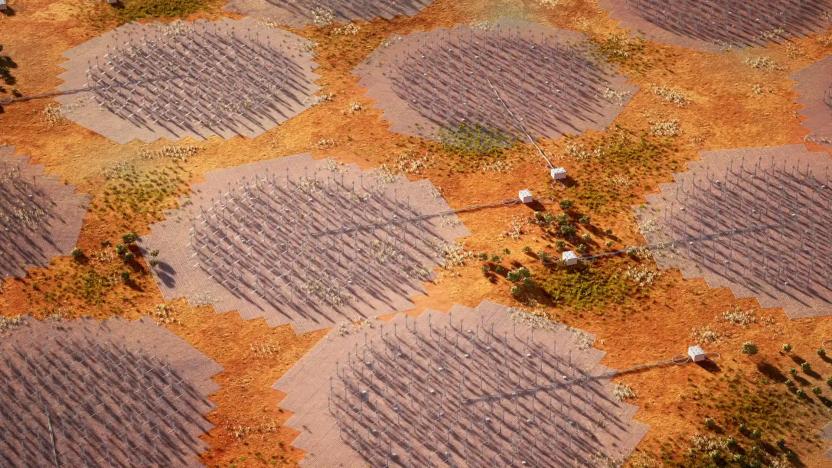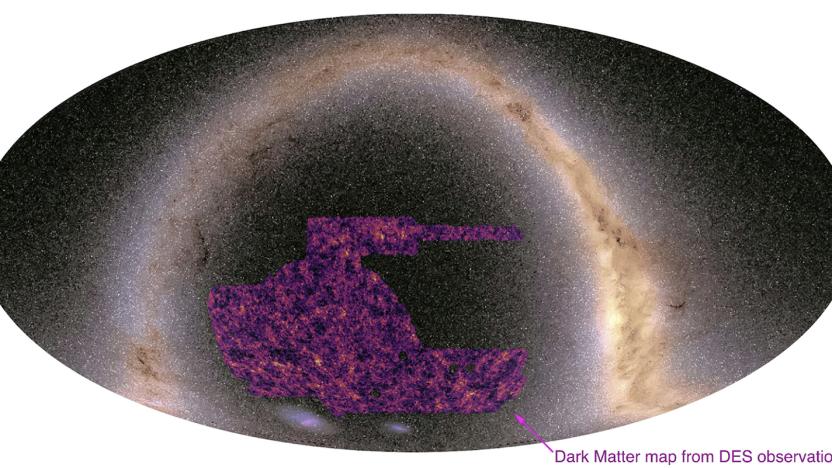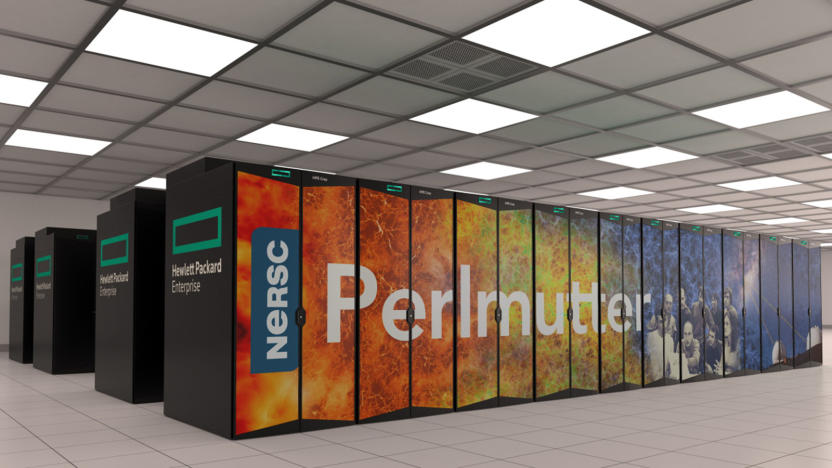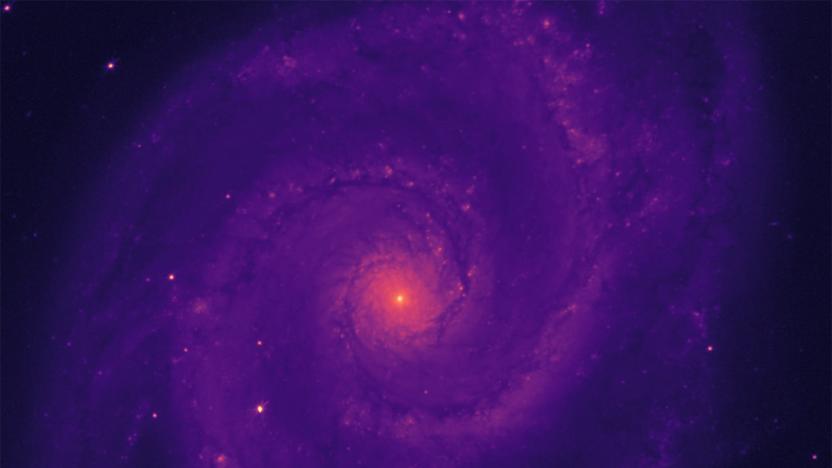dark energy
Latest

Construction starts in Australia on the world's largest radio telescope
Construction has begun for the world's largest radio telescope, which will help explore the early universe.

The best dark matter map to date raises questions about the universe
Scientists have released the most precise map of dark matter to date, but it only serves to highlight mysteries in the universe.

New AI supercomputer will help create the largest-ever 3D map of the universe
A new AI supercomputer, Perlmutter, is powerful enough that it will be used to help make the largest-ever 3D map of the universe.

Experiments with a single atom rule out the 'fifth force' theory of dark energy
Scientists have long known that the universe is expanding, but in the '90s data from the Hubble telescope showed something strange: the expansion is happening faster now than it did when the universe was younger. This flew in the face of all our models of the universe, and physicists realized that there must be some kind of energy throughout space which accelerates the universe's expansion. They named this phenomenon dark energy, and decades later we still have little idea what it could be.

Russia launches X-ray telescope to find 'millions' of black holes
Russia is back in the business of space observation after losing control of a radio telescope a the start of 2019. The country has successfully launched Spektr-RG, an X-ray telescope co-developed with Germany's help. The vessel will take 100 days to reach its final destination of Lagrange Point 2, where it can conduct studies in stable conditions a million miles from Earth. When it gets there, though, it could significantly reshape human understanding of the universe.

Dark Energy Spectroscopic Instrument lenses get their first look at space
Scientists are one step closer to precisely 3D mapping the galaxy and better understanding dark energy. For years, a team of more than 70 international organizations have been building the Dark Energy Spectroscopic Instrument (DESI), which will allow us to see the sky in a way we never have before. Earlier this week, DESI reached a "first light" milestone when scientists produced the first focused images with the instrument's precision lenses. The images show the Whirlpool Galaxy -- an estimated 23 million light years from Earth.

Astronomers map 1.2 million galaxies in colossal 3D image
After spending a decade measuring the stars, scientists just released a 3D map spanning 1.2 million galaxies. But it also measures the universe's expansion over time, giving credence to the theory that dark energy played a role in its increasing size.

DECam: Gazing deep into the final frontier in search of dark energy
The National Optical Astronomy Observatory (NOAO) puts it into perspective right away: "Eight billion years ago, rays of light from distant galaxies began their long journey to Earth." It's important to hold that fact in mind, as we marvel at the first images from deep in the belly of our universe to arrive from the Chile-based Dark Energy Camera (DECam). As that name might suggest, peering at remote galaxies for purely visual gratification isn't the camera's primary purpose. The result of eight years of planning and hard work, involving engineers and scientists from three continents, the DECam is mounted on the Victor M. Blanco Telescope at the Cerro Tololo Inter-American Observatory in Chile. Sitting atop a 7,200-foot mountain, the camera is part of the Dark Energy Survey, which intends to gather information on over 300 million galaxies. The goal is to better understand dark energy -- a concept that represents our best explanation for why the universe's rate of expansion is speeding up, rather than slowing due to gravity. Gaze past the break for the background on the project.

Scientists release biggest ever 3D map of the universe, lacks turn-by-turn navigation (video)
The stargazers at the Harvard-Smithsonian Center for Astrophysics have released a huge three-dimensional map of outer space, a core part of its six-year survey of the skies. Encompassing four billion light-years cubed, the researchers hope to use the map to retrace the movements of the universe through the last six billion years. Using the latest Sloan Digital Sky Survey (SDSS-III), the center says the data will help improve their estimates for the quantity of dark matter in space and the effect that dark energy has on the universe's expansion, "two of the greatest mysteries of our time" -- if you're an astrophysicist. Even if you're not, you'll still want to board the animated flight through over 400,000 charted galaxies -- it's embedded after the break.





